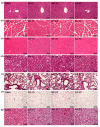Kefir Supplementation Modifies Gut Microbiota Composition, Reduces Physical Fatigue, and Improves Exercise Performance in Mice
- PMID: 29973525
- PMCID: PMC6073576
- DOI: 10.3390/nu10070862
Kefir Supplementation Modifies Gut Microbiota Composition, Reduces Physical Fatigue, and Improves Exercise Performance in Mice
Abstract
The present study evaluated the potential beneficial effect of kefir (KF) against fatigue. Furthermore, the composition of the gut microbiota is related to health benefits in the host; therefore, the study also investigated the effect of KF on the gut microbiota composition. Male ICR mice from four groups (n = 8 per group) were orally administered KF once daily for four weeks at 0, 2.15, 4.31, and 10.76 g/kg/day and were designated as the vehicle, KF-1X, KF-2X, and KF-5X groups, respectively. The gut microbiota was analyzed using 16S rRNA gene sequencing. The results showed a significant clustering of cecum after treatment in the vehicle, KF-1X, KF-2X, and KF-5X groups. The KF-2X and KF-5X groups showed a decreased Firmicutes/Bacteroidetes ratio compared with the vehicle group. In addition, anti-fatigue activity and exercise performance were evaluated on the basis of exhaustive swimming time, forelimb grip strength, and levels of serum lactate, ammonia, glucose, blood urea nitrogen (BUN), and creatine kinase (CK) after a swimming exercise. The exhaustive swimming time for the KF-1X, KF-2X, and KF-5X groups was significantly longer than that for the vehicle group, and the forelimb grip strength of the KF-1X, KF-2X, and KF-5X groups was also significantly higher than that of the vehicle group. KF supplementation also decreased serum lactate, ammonia, BUN, and CK levels after the swimming test. However, tissue glycogen content, an important energy source for exercise, increased significantly with KF supplementation. Thus, KF supplementation can alter the gut microbiota composition, improve performance, and combat physical fatigue.
Keywords: antifatigue; exercise performance; gut microbiota; kefir.
Conflict of interest statement
The authors declare no conflict of interest.
Figures







References
-
- St-Onge M.P., Farnworth E.R., Savard T., Chabot D., Mafu A., Jones P.J. Kefir consumption does not alter plasma lipid levels or cholesterol fractional synthesis rates relative to milk in hyperlipidemic men: A randomized controlled trial. BMC Complement. Altern. Med. 2002;2:1–7. doi: 10.1186/1472-6882-2-1. - DOI - PMC - PubMed
-
- Farnworth E.R., Mainville I. Kefir: A fermented milk product. In: Farnworth E.R., editor. Handbook of Fermented Functional Foods. CRC Press; Boca Raton, FL, USA: 2003. pp. 77–112.
MeSH terms
Substances
LinkOut - more resources
Full Text Sources
Other Literature Sources
Medical
Research Materials

